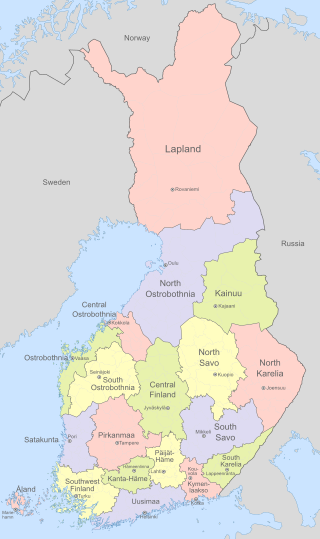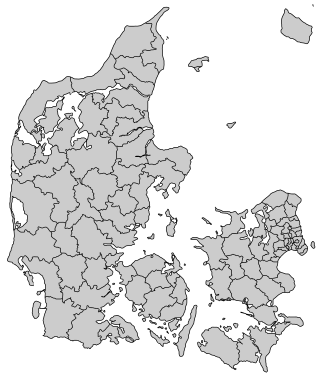
The 1986 Borders Regional Council election for the Borders Regional Council took place on Thursday 8 May 1986, alongside elections to the various regional councils across Scotland.
Independents won 14 of the council's 23 seats.

The 1986 Borders Regional Council election for the Borders Regional Council took place on Thursday 8 May 1986, alongside elections to the various regional councils across Scotland.
Independents won 14 of the council's 23 seats.
| Party | Seats | Gains | Losses | Net gain/loss | Seats % | Votes % | Votes | +/− | |
|---|---|---|---|---|---|---|---|---|---|
| Independent | 13 | 56.69 | |||||||
| Conservative | 6 | 19.40 | |||||||
| Alliance | 2 | 5.23 | |||||||
| SNP | 1 | 18.69 | |||||||
| Borders Independent | 1 | (incl under Ind) | |||||||
| Labour | 0 | 0.00 | |||||||

There are twelve provinces of the Netherlands representing the administrative layer between the national government and the local municipalities, with responsibility for matters of subnational or regional importance.

France is divided into eighteen administrative regions, of which thirteen are located in metropolitan France, while the other five are overseas regions.

Metropolitan counties are a subdivision of England which were originally used for local government. There are six metropolitan counties: Greater Manchester, Merseyside, South Yorkshire, Tyne and Wear, West Midlands and West Yorkshire.

The Scottish Borders is one of 32 council areas of Scotland. It borders the City of Edinburgh council area, Dumfries and Galloway, East Lothian, Midlothian, South Lanarkshire, West Lothian and, to the south-west, south and east, the English unitary authorities of Cumberland and Northumberland. The administrative centre of the area is Newtown St Boswells.

Finland is divided into 19 regions.

On the federal level, there are two main elections in Austria: presidential elections and elections to determine the composition of the National Council (Nationalrat), the lower house of Austria's bicameral Parliament. The upper house, the Federal Council consists of delegates from the states and is not directly elected. These elections are governed by federal law, which also applies to European Parliament elections in Austria.

Fingal County Council is the local authority of the county of Fingal, Ireland. It is one of three local authorities that succeeded the former Dublin County Council on abolition on 1 January 1994 and is one of four local authorities in County Dublin. As a county council, it is governed by the Local Government Act 2001. The council is responsible for housing and community, roads and transport, urban planning and development, amenity and culture, and environment. The council has 40 elected members. Elections are held every five years and are by single transferable vote. The head of the council has the title of Mayor. The county administration is headed by a Chief Executive, AnnMarie Farrelly. The county town is Swords.

Denmark is divided into five regions, which contain 98 municipalities. The Capital Region has 29 municipalities, Southern Denmark 22, Central Denmark 19, Zealand 17 and North Denmark 11.

The regions, formerly known as the government office regions, are the highest tier of sub-national division in England. They were established in 1994 and follow the 1974–96 county borders. They are a continuation of the former 1940s standard regions which followed the 1889–1974 administrative county borders. Between 1994 and 2011, nine regions had partly devolved functions; they no longer fulfil this role, continuing to be used for limited statistical purposes.

Regional elections were held in Scotland on 5 May 1994, as part of the Local Government (Scotland) Act 1973. These were the last elections before 29 new mainland unitary authorities, established by the Local Government etc. (Scotland) Act 1994, came into effect. The councils up for election were last contested in 1990 Scottish regional elections, and vote and seat changes are compared to the 1990 results.

The fourth election to Lothian Regional Council was held on 8 May 1986 as part of the wider 1986 Scottish regional elections. The Lothian result was little different from the wider Scottish results, which saw Labour making strong gains across Scotland. In Lothian this allowed Labour to secure their majority on the 49-seat council.
The fourth election to Tayside Regional Council was held on 8 May 1986 as part of the wider 1986 Scottish regional elections. The election saw the Conservatives losing control of the region, with Labour emerging as the single largest force on the 46 seat council. Following the election the Labour Party formed a minority administration. Ian Mackie CBE, the chair of the Conservative Group, was defeated in Clepington-Maryfield ward.

The fourth election to Grampian Regional Council was held on 8 May 1986 as part of the wider 1986 Scottish regional elections. The election saw the Conservatives suffering heavy losses, which were in turn picked up by the various other parties. The Labour Party emerged as the single largest force on the 57 seat council, although all parties fell well short of the 29 seats needed for a majority. The election was particularly devastating for the Conservatives in the region given that they had controlled the council since its creation in 1974.

Elections for Borders Regional Council took place on Thursday 6 May 1982, alongside elections to the various regional councils across Scotland.

Elections to Strathclyde Regional Council were held on Thursday 8 May 1986, on the same day as the eight other Scottish regional elections. This was the fourth election to the regional council following the local government reforms in the 1970s.

Elections to Strathclyde Regional Council were held on Thursday 3 May 1990, on the same day as the eight other Scottish regional elections. This was the fifth election to the regional council following the local government reforms in the 1970s.

The 1986 Fife Regional Council election, the fourth election to Fife Regional Council, was held on 8 May 1986 as part of the wider 1986 Scottish regional elections. The election saw Labour maintaining their control of the regions 46 seat council.
The 1986 Highland Regional Council election to the Highland Regional Council was held on 8 May 1986 as part of the wider 1986 Scottish regional elections. The election saw Independents win control of 36 of the council's 52 seats.
The 1994 Borders Regional Council election, the sixth and final election to Borders Regional Council, was held on 5 May 1994 as part of the wider 1994 Scottish regional elections. All 27 seats were up for election, an increase of 4 from the last election due to boundary changes. 5 electoral divisions were uncontested, and a total of 64 candidates stood for election. The election saw Independents take the most seats, although they lost their overall majority.

The 1990 Borders Regional Council election, the fifth election to Borders Regional Council, was held on 3 May 1990 as part of the wider 1990 Scottish regional elections. The election saw the Independents gain a majority on the 23 seat council.